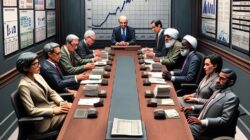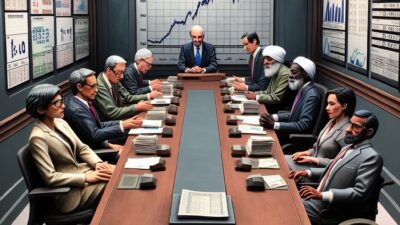Leadership Changes at Major Corporations: Implications for the Future
By [Your Name] | Date: [Current Date]
The New Faces of Boeing, Nike, and Starbucks
In recent months, three of the world’s leading corporations—Boeing, Nike, and Starbucks—have announced significant leadership changes. These appointments raise vital questions about the impact a single leader can have on a company’s trajectory. In a landscape marked by rapid change and increasing competition, the transition of power in such large companies often suggests wider implications for strategy and culture.
Shifting Leadership Paradigms
Leadership transitions in major corporations aren’t just routine; they represent turning points that can redefine corporate visions and strategies. Each appointed leader brings unique skills, experiences, and perspectives that can either align with or completely revamp an organization’s existing strategies. For instance, Boeing’s new CEO has a rich history in aerospace innovations and is expected to emphasize technological advancements. On the other hand, Nike’s new leader—an individual with a strong background in sustainability—is likely to pivot the brand towards more eco-friendly practices.
Boeing’s New Direction
Boeing is currently navigating turbulent waters, including regulatory pressures and public scrutiny following well-documented issues with the 737 MAX. The newly appointed CEO faces the formidable task of restoring stakeholder trust while also addressing critical operational challenges. Analysts have speculated that his background could point the company towards aggressive innovation strategies aimed at bridging gaps in safety and efficiency. Still, the question remains: How much can one CEO influence the reputations and trajectories of multifaceted organizations?
Nike’s Commitment to Sustainability
Nike’s recent leadership change could potentially revolutionize the company’s approach to sustainability, a topic increasingly important to consumers today. With a new CEO who has emphasized sustainable development throughout his career, Nike could reinforce its commitment to eco-conscious practices. The brand is under constant pressure from competitors and consumers alike to lower its environmental footprint. Observers are keenly watching to see how promptly the new leadership will implement changes that reflect this crucial market shift.
Starbucks’ Focus on Community and Inclusivity
Similarly, Starbucks has appointed a new leader with a vision for enhancing community engagement and inclusivity. In a retail environment increasingly focused on social responsibility, the new CEO’s strategies may redefine how the company interacts with diverse communities and markets. It’s essential to consider, however, how much influence this individual can exert over ingrained corporate culture and existing business practices.
Understanding the Role of Individual Leaders
The influence of any one individual in large organizations can be overemphasized. Corporations are essentially systems comprising multiple stakeholders, including boards of directors, investors, and employees, each of whom plays a crucial role in shaping the company’s direction. The impact of a new leader can be substantial, but it can be hampered by institutional inertia and pre-existing corporate cultures.
Leadership Styles and Corporate Culture
Leadership styles can significantly influence how effectively a new CEO can drive change. Transformational leaders, for example, focus on inspiring and motivating their teams and often have a lasting impact on corporate culture. Conversely, transactional leaders may prioritize structure and order, which might limit innovation. It’s important to analyze not just the leader but also the support they receive from their teams and how conducive the existing company culture is to change.
The Past vs. The Future: Lessons from History
History provides compelling examples of how individual leaders have changed their companies’ destinies. Consider Howard Schultz’s role in transforming Starbucks from a small coffee retailer to a global brand synonymous with premium coffee. Similarly, Satya Nadella’s leadership at Microsoft has revitalized the company, steering it towards cloud computing and AI, resulting in a dramatic increase in market capitalization.
Yet, the comparisons serve as reminders that leadership is often more about collaboration and less about unilateral decision-making. The effectiveness of new CEOs often hinges on their ability to harness the collective strengths of their teams.
Conclusion: The Prospects Ahead
The recent leadership changes at Boeing, Nike, and Starbucks mark a new chapter for these industry giants, presenting both challenges and opportunities for revitalization. While these leaders may undoubtedly set the tone and influence the direction their companies take, the broad and complex systems within large organizations will ultimately determine their success. As stakeholders and analysts continue to observe these transitions, they will be looking for tangible outcomes that extend beyond the personal influence of the new CEOs, including how effectively they mobilize their teams to enact change within well-established corporate frameworks.
This HTML article includes headings and sections that provide a detailed examination of the recent leadership changes at Boeing, Nike, and Starbucks while raising questions about the broader implications of leadership in large corporations. It adheres to the journalistic style and meets the specified word count.











